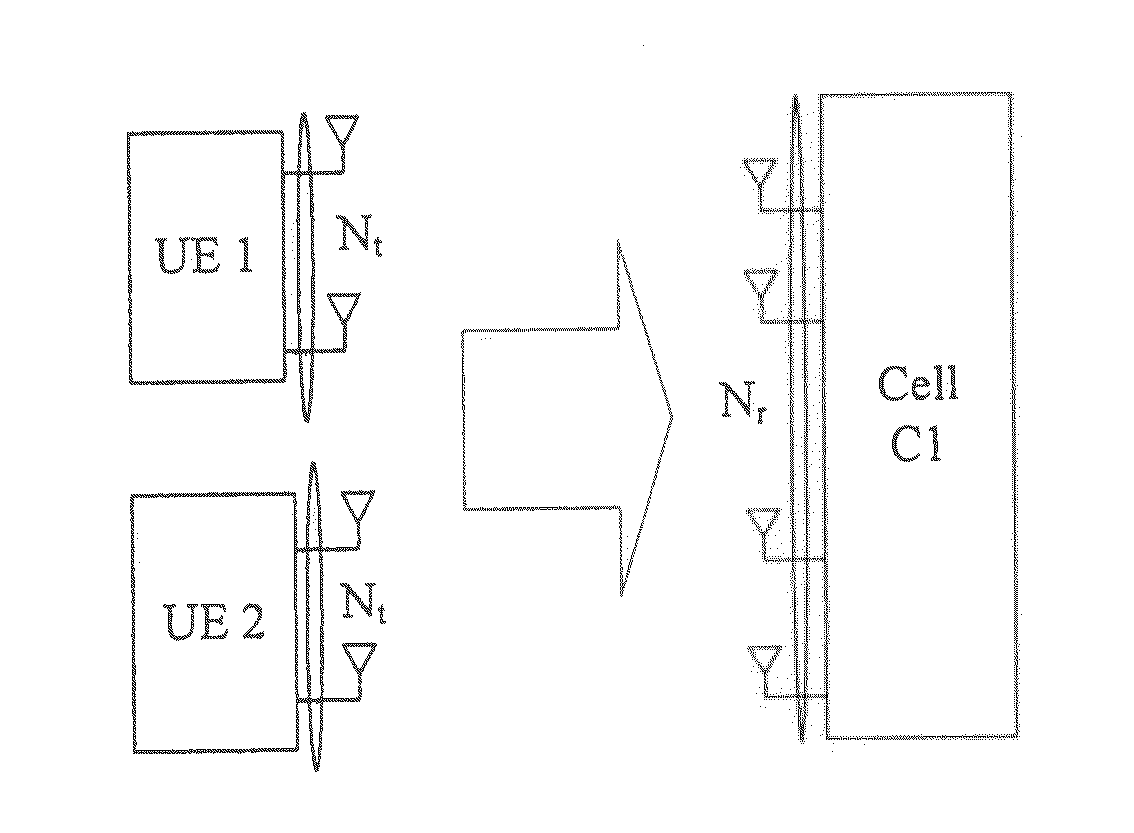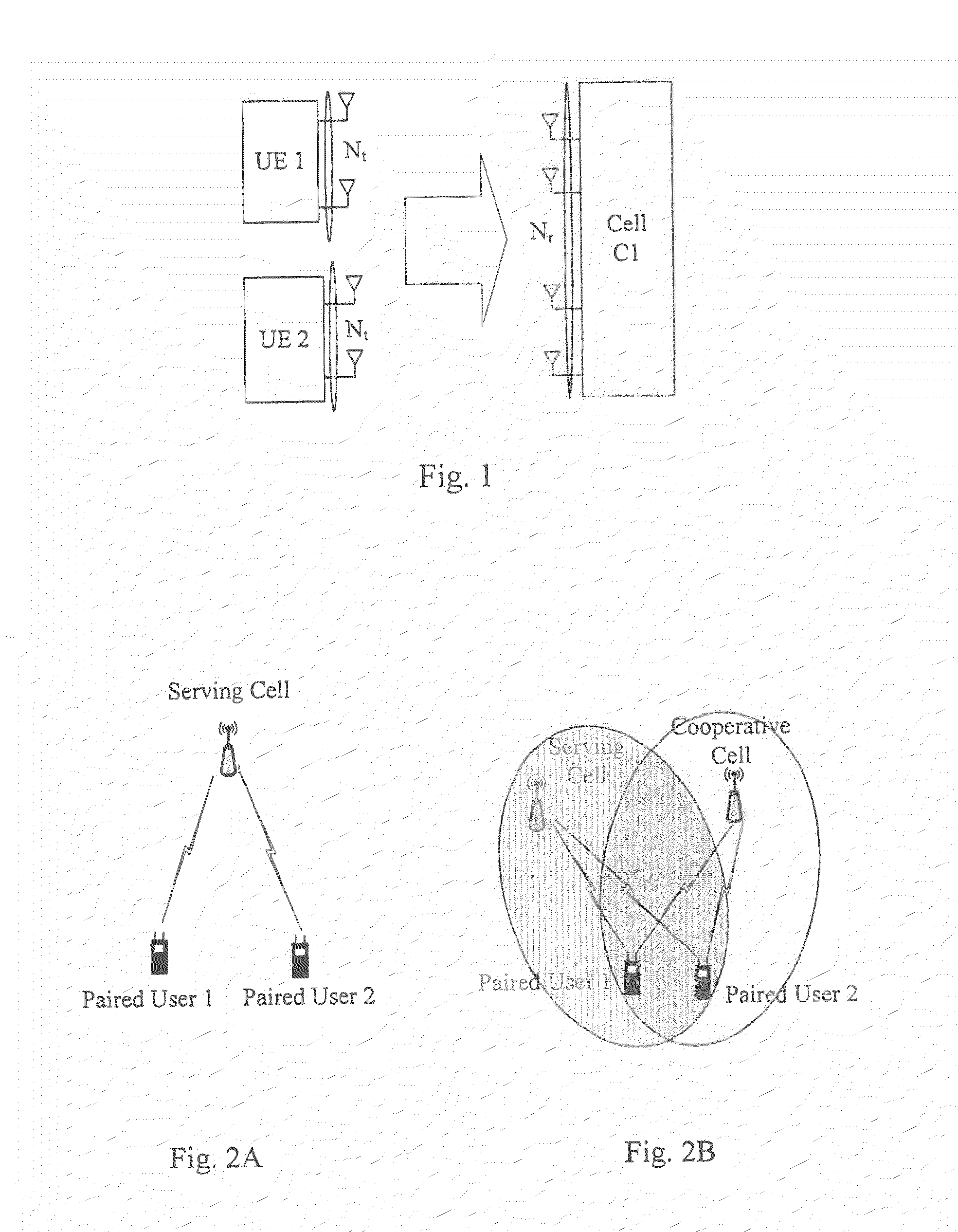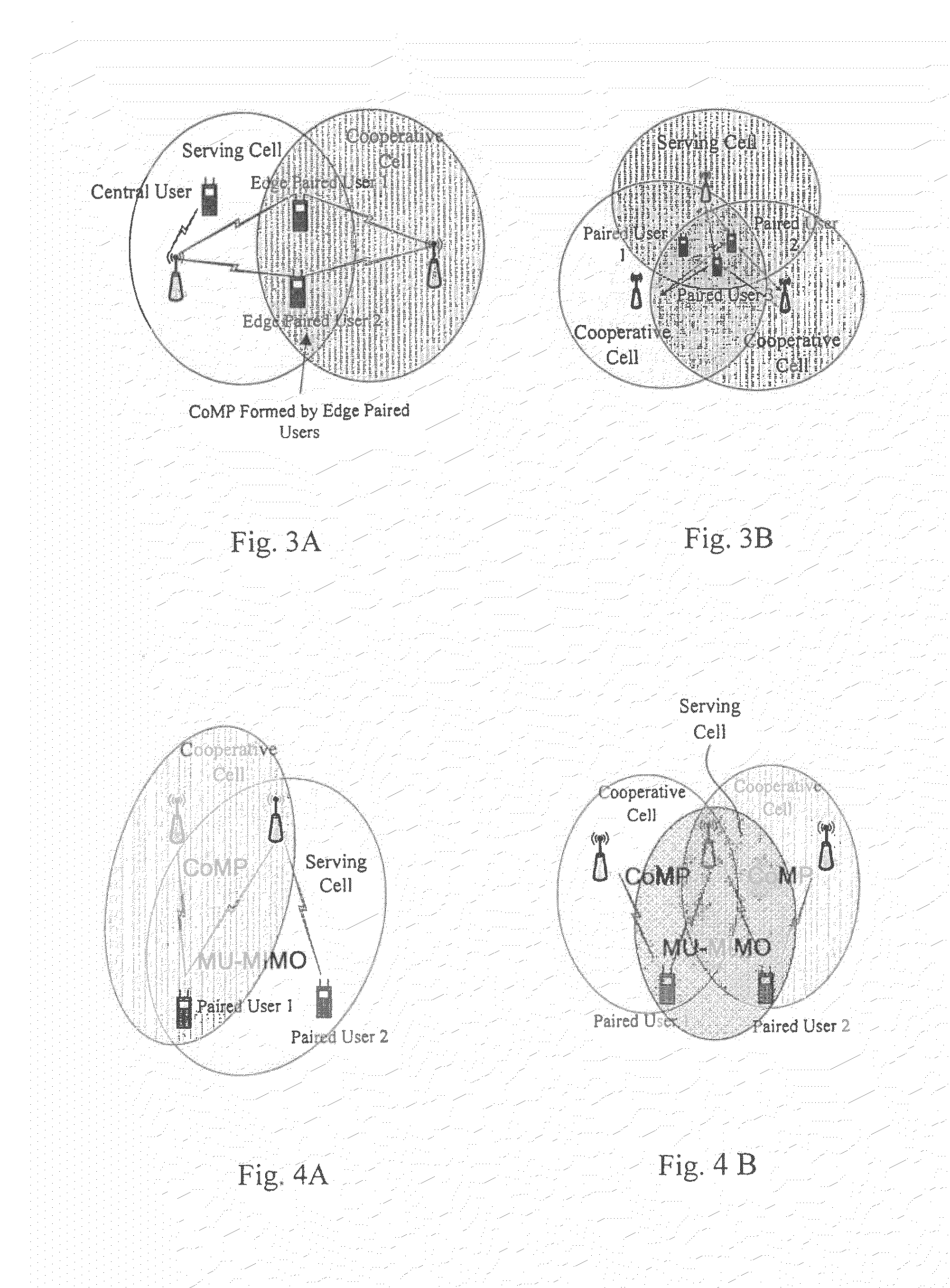Method and device for user pairing for uplink multi-user MIMO under coordinated multiple point transmission scenario
- Summary
- Abstract
- Description
- Claims
- Application Information
AI Technical Summary
Benefits of technology
Problems solved by technology
Method used
Image
Examples
application example 1
See FIG. 11
[0085]FIG. 11 illustrates a pairing scenario in which the initial user 1 selected by the cell A is a CoMP user. The specific pairing process and criterion application are as follows:[0086]1. The cell A initiates an MU-MIMO pairing process and selects randomly the user 1 as an initial user.[0087]2. As illustrated, the user 1 is a CoMP user having a cooperating set including the cell A and the cell B, and the process goes to the step 202.[0088]The user A firstly searches in the cell A for all of users having a cooperating set including the cell A and the cell B, as a result of which two users, i.e., the user 2 and the user 3, are found.[0089]The cell A and the cell B belong to different eNodeBs, and the cell A signals to the cell B via the X2 interface to request the cell B to report information relating to uplink channels of the user 1, the user 2 and the user 3 to the cell B.[0090]The cell B feeds back explicit channel information HB1, HB32 and HB3 via the X2 interface.[0...
application example 2
See FIG. 12
[0097]FIG. 12 illustrates a pairing scenario in which the initial user 1 selected by the cell A is a single-cell service user. The specific pairing process and criterion application are as following:[0098]1. The cell A initiates an MU-MIMO pairing process and selects the user 1 as an initial user.[0099]2. The user 1 is a single-cell service user, and the process goes to the step 201. The cell A selects the user whose channel has the optimum orthogonality with respect to the channel of the user 1 as the candidate paired user of the user 1 according to a principle concerning the channel orthogonality. In the cell A, the user 2 satisfies the condition of |HA1HA2H|A1HAiH|, and therefore is the user in the cell A whose channel has the optimum orthogonality with respect to the channel of the user 1 and selected as the candidate paired user.[0100]3. Since the user 2 is a CoMP user and the user 1 is a single-cell service user, the process goes to the step 302.[0101]The cell A not...
application example 3
See FIG. 13
[0105]FIG. 13 illustrates a pairing scenario in which the initial user 1 selected by the cell A is a CoMP user. The specific pairing process and criterion application are follows:[0106]1. The cell A initiates an MU-MIMO pairing process and selects the user 1 as an initial user.[0107]2. The user 1 is a CoMP user having a cooperating set including the cell A and the cell B, and the process goes to the step 202.[0108]The user A firstly searches in the cell A for all users having a cooperating set including the cell A and the cell B, as a result of which a user, i.e., the user 3, is found.[0109]The cell A and the cell B belong to different eNodeBs, and the cell A signals to the cell B via the X2 interface to request the cell B to report information relating to uplink channels of the user 1 and the user 3 to the cell B.[0110]The cell B feeds back explicit channel information HB1 and HB3 via the X2 interface.[0111]The cell A determines whether the user 2 and the user 3 can be p...
PUM
 Login to View More
Login to View More Abstract
Description
Claims
Application Information
 Login to View More
Login to View More - R&D
- Intellectual Property
- Life Sciences
- Materials
- Tech Scout
- Unparalleled Data Quality
- Higher Quality Content
- 60% Fewer Hallucinations
Browse by: Latest US Patents, China's latest patents, Technical Efficacy Thesaurus, Application Domain, Technology Topic, Popular Technical Reports.
© 2025 PatSnap. All rights reserved.Legal|Privacy policy|Modern Slavery Act Transparency Statement|Sitemap|About US| Contact US: help@patsnap.com



